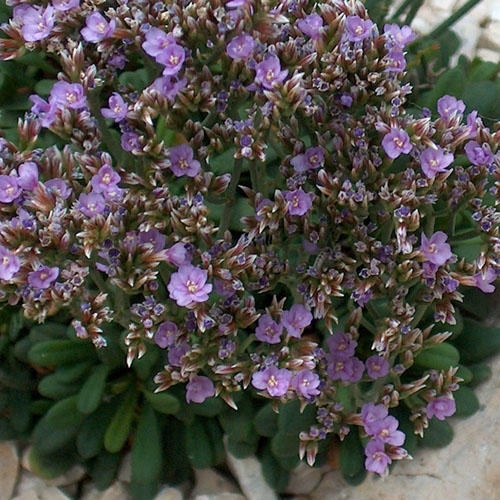Description
OUT OF STOCK
All summer long, droves of lavender blossoms above a mini pillow of spoon-shaped, glossy foliage.
All summer long, droves of lavender blossoms above a mini pillow of spoon-shaped, glossy foliage.
OUT OF STOCK
All summer long, droves of lavender blossoms above a mini pillow of spoon-shaped, glossy foliage.
Small crimson-red bells dangle from July to September
Size: 8’ x 3’
Care: Sun in humusy, fertile, moist well-drained soil. Mulch around the base. Flowers on current year’s stems so cut back to 6-9” in late winter or early spring.
The genus Clematis was named by Dioscordes, physician in Nero’s army, from “klema” meaning climbing plant. The species 1st collected by the “Father of Texas botany,” Ferdinand Lindheimer in 1830’s. Max Leichtin of the Baden Garden sent Clematis texensis to Kew Botanic Garden near London in 1880’s. French nurseryman Francisque Morel sent this selection to William Robinson who named it for his English nursery at Gravetye Manor in 1914.
Fast-growing, pyramidal-shaped deciduous conifer. The orange to brown trunk base tapers and thickens with up to a dozen large buttress-like root flares extending several feet up the trunk. Feathery, fern-like, soft foliage emerges light green in spring, and turns red-bronze in fall before dropping. Its branches are well-attached and make excellent climbing.
Size: 70-90’ x 15-25’
Care: sun in moist to moist well-drained, slightly acid soil
Native: Szechuan China
Awards: Royal Botanic Garden Award of Garden Merit, Yew Dell Botanical Gardens’ Theodore Klein Plant Awards & Pennsylvania Horticultural Society Gold
From fossil records, dawn redwood is known to have existed as many as 50,000,000 years ago. However, it was not until 1941 that dawn redwood was first discovered growing in the wild near the town of Modaoqi China by Chinese forester, T. Kan. Seeds collected from the original site were made available to the Missouri Botanical Garden in 1947. Seedlings grown therefrom were planted in front of the Lehmann Building at MBG in 1952 where they have now developed into large mature trees (70’+ tall). Dawn redwood is a deciduous, coniferous tree that grows in a conical shape to 100’ tall. It is related to and closely resembles bald cypress (Taxodium) and redwood (Sequoia).
OUT OF STOCK
Rosettes of succulent leaves
Size: 4” x 4”
Care: sun in well-drained to moist well-drained soil
Native: Alps & Pyrenees Mountains
Grown in gardens for thousands of years. Sempervivum means “live forever.” Romans planted Hens and chicks on their roofs to ward off lightening. As a succulent it holds water and is probably more difficult to catch fire. “This practice was preserved for historians when Charlemagne (720-814), first Holy Roman Emperor and unifier of a large part of northern Europe, ordered that all villagers within his crown lands plant houseleeks on their roofs He decreed: “Et ille hortulanus habeat super domum suam Iovis barbam. (And the gardener shall have house-leeks growing on his house. Capitulare de villis, about 795, LXX.)”
OUT OF STOCK
Bushy plants bear showy, red-purple pea-like blooms age to rich purple in March-June. Spring gem.
Size: 10” x 10”
Care: sun in north to shade in south, moist well-drained soil. Drought tolerant once established
Native: No. Europe - Siberia
Awards: Royal Horticultural Society Award of Garden Merit, Elisabeth Carey Miller Botanical Garden Great Plant Picks
Introduced to gardens before 1629 when herbalist John Parkinson (1567-1650) called it “Blew Everlasting Pease.”

